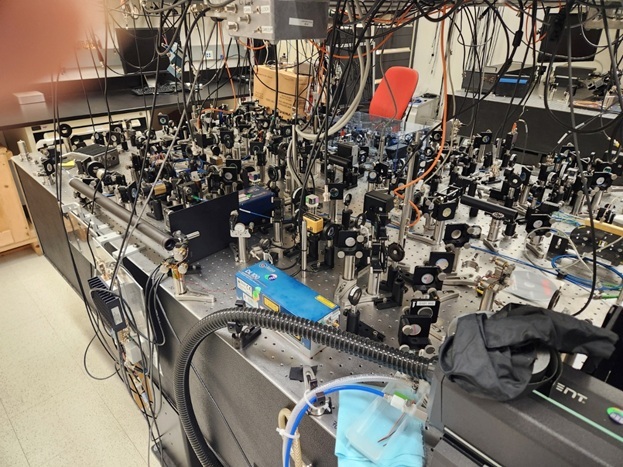April 01, 2025
Robert E. Parks
Optical Perspectives Group, LLC
In a renewed spotlight nearly two decades after its original publication, "Alignment of Optical Systems" by Robert E. Parks is drawing fresh attention in the photonics and optical engineering communities. The paper, first presented at the International Optical Design Conference in 2006 and published by SPIE, has long served as a reference for professionals working with precision optical assemblies.
The renewed interest stems in part from a recent LinkedIn post that spotlighted not only Parks’ influential paper, but also his ongoing contributions to optical alignment—particularly his use of Bessel beams, which propagate similarly to a single ray in ray tracing programs. In the paper, Parks outlines three fundamental types of alignment. The first relies solely on mechanical tolerances, such as drop-in lenses or snap-together systems. The second focuses on centering lenses within a cell, where certain degrees of freedom are constrained by the seating surfaces.
The third type of alignment allows for full adjustability in both tilt and decenter—enabling precise control over all degrees of freedom. This method is essential for highly accurate optical systems, such as lithographic lenses, where the opto-mechanical design supports complete alignment to the original specifications. Recently, Parks demonstrated that even tabletop experimental setups can offer the necessary degrees of freedom for full alignment. By using a Bessel beam, it's possible to achieve precise tilt and decenter adjustments without the need for costly, high-end hardware.
Unlike the approach described in the original paper—where alignment precision depended entirely on high-precision mechanics to locate centers of curvature—the new method employs a Bessel beam as an optical axis reference. This beam guides the positioning of test instrumentation, which is then used to locate the centers of curvature. The technique maintains the accuracy of traditional alignment methods while significantly reducing implementation costs, making high-precision alignment accessible to a broader range of users.
“The fundamentals of optical alignment haven’t changed—it’s still about understanding the system as a whole, knowing how many degrees of freedom you can adjust, and applying careful, methodical techniques,” said Parks. “What’s different now is that we have new tools to help with alignment. I’m thrilled the paper still resonates, especially as younger engineers explore these newer methods and bring fresh energy into the field.”
Parks, a veteran optical engineer with decades of experience in metrology and system >integration, wrote the paper to bridge the gap between the people designing optics and the real-world realization of the design in hardware. The paper covers alignment philosophies, key principles like the kinematics of adjustments, and practical advice from years of hands-on experience. His years of experience taught him to always look for simpler, faster and less costly methods and the search has paid off with the discovery of the use of a Bessel beam.
As interest in high-precision optical systems grows—spanning fields from aerospace and defense to biomedical imaging and consumer electronics—the fundamentals of proper alignment remain critical, as they represent the only opportunity to ensure the hardware performs to the full potential of its design. Parks’ insights continue to guide both seasoned engineers and newcomers alike.
To read the original paper, visit SPIE at https://spie.org/publications, SPIE Proceedings, 6342, International Optical Design Conference 2006; 634204 (2006), doi: 10.1117/12.692190
About the author:
Mr. Parks has a BA and MA in Physics from Ohio Wesleyan University and Williams College, worked in industry as an optical engineer for 10 years before coming to the University of Arizona Wyant College of Optical Sciences to manage the optical shop. He left the University in 1992 as an adjunct assistant professor to start his company, Optical Perspectives Group, LLC that has as its main product the Point Source Microscope, a modern autostigmatic microscope.
Quote from comment on LinkedIn: “It's super easy to draw perfectly manufactured/aligned optical systems in a diagram (and straight lines, perpendicular lines, and on and on), but actually making them and/or measuring them so that you know when you have them is another matter that's typically left to the specs of the manufacture's literature.” Christian Guertin, President, Vermont Photonics





